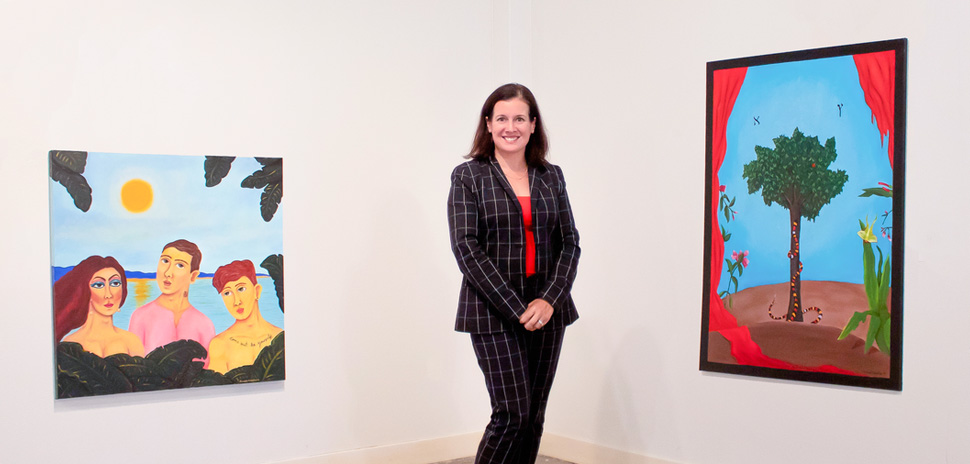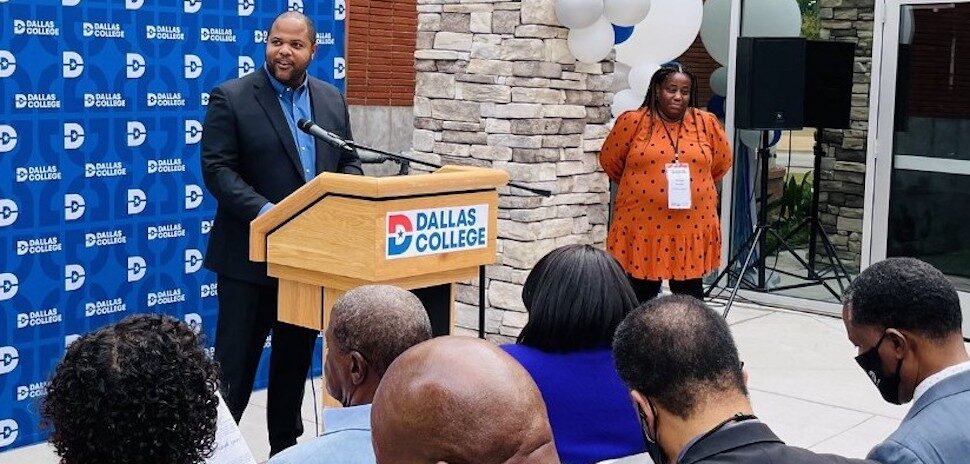The Dallas art scene has come a long way since Jennifer Scripps came back to town.
And it still has a long way to go.
The Dallasite was recruited more than 10 years ago to lay the groundwork for a hands-on educational museum in Uptown Dallas—a museum now known as the Perot Museum of Nature and Science.
READ NEXT: A Year in the Making, Dallas’ New Cultural Plan Seeks Equitable Arts Funding
That job led Scripps to participate in a Leadership Dallas class hosted by the Dallas Regional Chamber of Commerce. That 2009 class — which included a real “who’s who” in Dallas — opened Scripps’ eyes to the wider discrepancies and deficiencies in the local art scene. She found that social justice, regionalism, health concerns, and transportation problems were all connected. And, that art wasn’t prioritized as much as it should be.
“I really consider [Leadership Dallas] a second master’s degree,” Scripps says. “Arts and culture were one of the last [priorities]. It set a really good stage for me to understand the larger picture.”
As the director of the Office of Cultural Affairs, she’s been working hard work on a draft cultural plan that will shape the future of art in Dallas that was released in August and goes before the City Council this month.
Now, as the director of the Office of Cultural Affairs, she’s been working hard work on a draft cultural plan that will shape the future of art in Dallas that was released in August. The Cultural Plan started in September 2017 with 33 community meetings where Scripps and others listened to what Dallas residents would like to have.
With all the feedback from the community meetings, Scripps says they expect to finalize the Cultural Plan for the city of Dallas this month and have it ready to present to the City Council by the end of the year.
“I want to see the city of Dallas embrace art in a different way,” Scripps says. “Other cities around the country are doing a lot of placemaking and temporary public art. We need to change some city policies to do that, but we certainly can, and will. It’s been wonderful to get to do this in my hometown.”But this doesn’t mean more large museums and theater buildings—the city’s Office of Cultural Affairs manages 22 art-related venues now.
“We’re substantially built out. I’m not saying we won’t ever build another new cultural venue,” Scripps says. “We need to create a sustainable model for all arts organizations across the city and not worry about more ribbon cuttings.”
Artistic vision
Her vision for the future includes spaces for public art, improving access to theaters located inside libraries and using a park pavilion for concerts and spoken word poetry events.
“People want to live, work, and play in really vital neighborhoods,” Scripps says. “How are we going to make Dallas richer artistically? How are we going to support artists? How are we going to improve the equity of access to art? Issues around accessibility are real in our city.”
Having an arts-related event in a public space promotes a safe use for the space and showcases its potential—as long as residents can get there. The Cultural Plan also will address transportation issues, looking at everything from rideshares and bike shares to roads and walkability.
READ NEXT: A Year in the Making, Dallas’ New Cultural Plan Seeks Equitable Arts Funding
“I don’t think OCA can fix our transit challenges, but again, it’s all about the connections,” Scripps says.
She’d like to see more inventive artwork incorporated into the cityscapes, like the brightly colored thermoplastic crosswalk that recently showed up at the corner of Lemmon and McKinney avenues. That artwork was done by Ricardo Paniagua, a Dallas artist.
This encourages pedestrian activity while giving people something artistic to look at, creating a sense of place instead of the normal white ladders of a traditional crosswalk.
Dallas has a thriving theater system from small community black box theaters all the way to large venues like the Dallas Theater Center. The Dallas Children’s Theater has gained national notoriety by touring the country.
“We have to give people the stage locally to prepare them for the larger opportunities,” Scripps says. “We’re nurturing that whole community. I love talking about what we produce and share nationally.” Many of the city’s libraries have theater space in them, but the hours are dramatically different for the two. The plan looks for ways to resolve that so theaters can be opened later.
Through the cultural meetings, Scripps found that Dallas neighborhoods are proud, and they want to show off their individuality.
“The Jimmy and Stevie Ray Vaughan public art project at Kiest Park is a really good example of honoring native sons,” Scripps says. “They came from here.” The tribute is in the final planning stages and will honor the brothers at the park.
There’s also a project in the works to honor legendary Dallas artist Arthello Beck Jr., whom Scripps calls one of the most influential artists of the 20th Century. The request for proposals went out in January.
“We’re really trying to work with emerging artists when it comes to public art,” Scripps says. “Letting people get that first commission is so important.”
Full circle
Scripps returned to Dallas with the goal of inspiring Science Technology and Math (STEM) education at what would become the Perot Museum of Nature and Science. But her heart has always been in the arts.
Before joining the Perot, she worked for a theater company in New York City. Since coming back to Dallas in 2007, she’s been along for the ride as art began to transcend the traditional forms and break stereotypes. She’s seen art become more of a priority in education.
The old silos are being broken down so people who are good with numbers and computer programming can also express artistic creativity. “Computer design done well is artistic a lot of times,” she says. “It’s literally seamless.” She’s learned a lot through all the community meetings and can’t wait to put the plan into action.
“What’s wonderful is how much pride there is in Dallas and how much people want to partake in art,” Scripps says. “I think there’s a greater appreciation now that this is bigger than the Arts District in Dallas. No matter where you live we have a broader understanding of arts and culture in Dallas.”
A version of this article appeared in the Dallas-Fort Worth Real Estate Review, Summer 2018.
READ NEXT
Green Building Public & Education LEED-ers in Dallas-Fort Worth
Developers, designers, and cities are pushing sustainability forward in North Texas, creating friendly and beautiful structures.
13 Pioneering DFW Projects In LEED
Developers, designers, and cities are pushing sustainability forward
Placemakers: For Todd Interests, Revitalizing a Downtown Dallas Neighborhood is a Family Affair
East Quarter continues Todd Interests’ track record of investing in properties and turning them into unique landmarks in the city.


































































